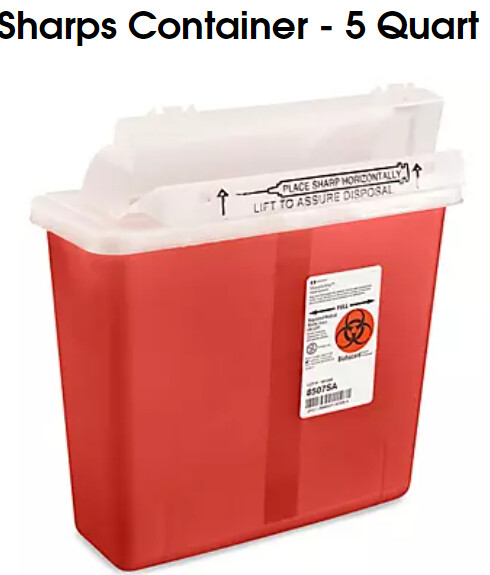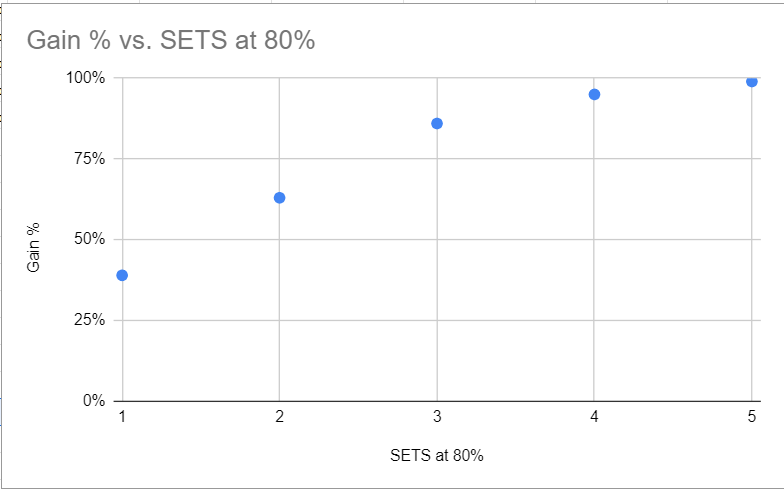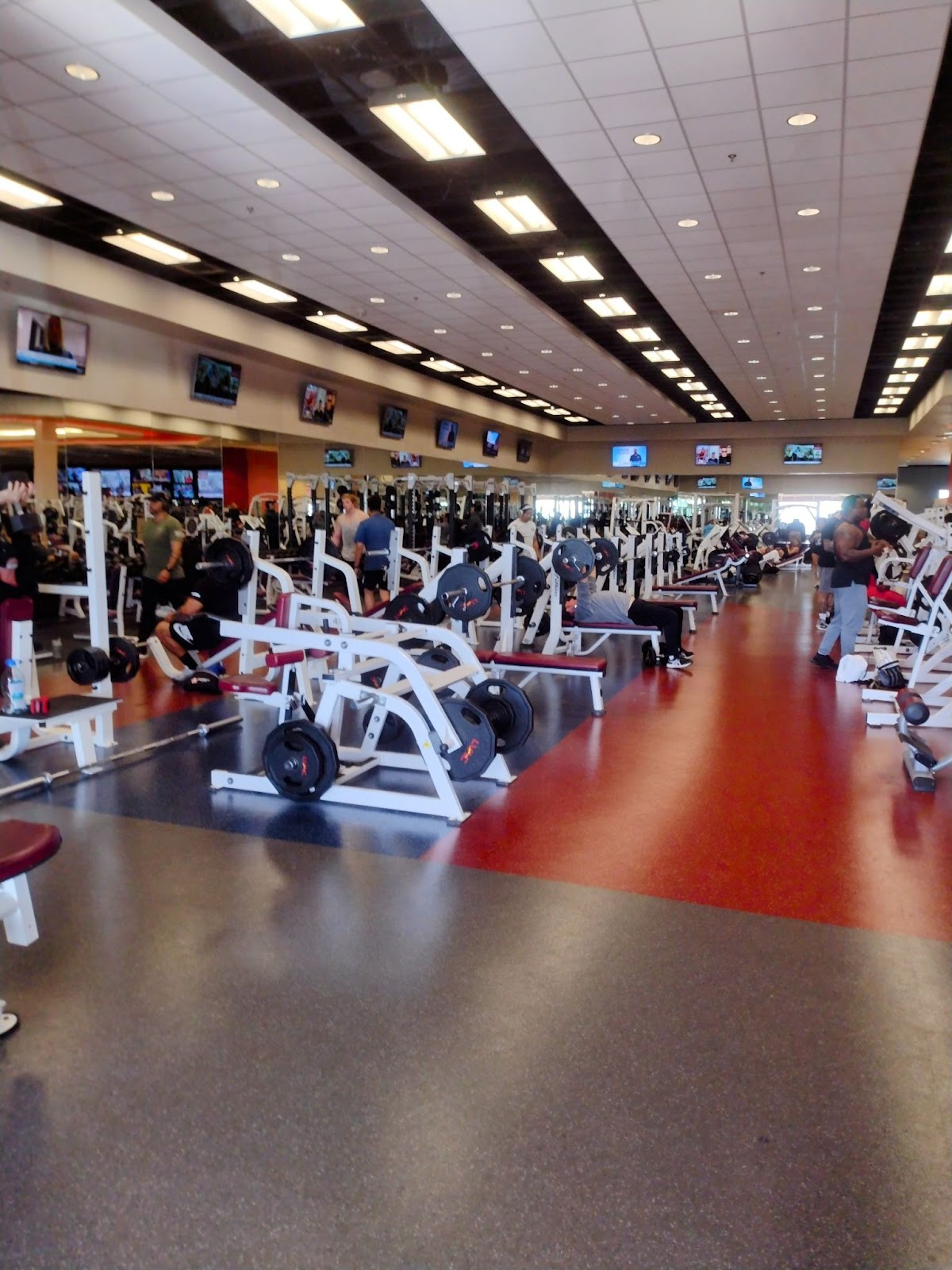Disagree if you want, it’s been validated in the research and in the trenches. There’s a reason why the vast majority of successful bodybuilders train the same general way.
Yeah, with steroids. Which, by the way, I am going to implement myself in the future. I belong to a rather large health club and it is plain to see which guys are pumping as much with steroids as weights. In the near future, I am going to post pictures of the Sharps containers in the restrooms at my gym. The use of steroids in the gym is rampant.
I have been training and doing various forms of resistance training for decades and while some methods may be more efficient in the short run, over the long haul, I don’t think it matters that much.
IMO: Anyone can reach their personal plateau with any number of varieties of resistance training. Beyond that, you are going to need some help in the form of steroids. I certainly do not recommend steroids for anyone except those, like myself, that have a very low or below-normal level of T.

I’ll be the first to acknowledge that testosterone use is very widespread today, even by “normies” in hole in the wall gyms. Even people who don’t look like much. But I think implying that the only reason that 3-4 x 10-12 works is because of steroids gives a very inaccurate picture of reality. I don’t think it should be surprising that moderate volume and moderate intensity is a good idea for a lot of folks.
They are not inane. I was responding to the claims you made with facts and my opinions. That’s useful discussion. About letting it go. Sorry but this is a public forum. If you post something on a public forum you have to be ready for people responding to you. Some of these responses will be criticism. Sometimes that criticism will be wrong but sometimes it will be correct. If you can’t handle that without feeling like you’re being attacked personally, or feeling like someone is trying to be better than you, then maybe you shouldn’t take part in public discussions. I will continue posting and responding on this forum when I think that I can provide useful posts with value because I know many people here appreciate my posts. I’m not stopping just because you don’t like it.
I know what is validated by research and it’s not exactly what you outlined. What I agree with you on is that, yes it does work for successful bodybuilders like Arnold. But an important point that is often forgotten is that what works best for someone with elite genetics and on tons of steroids is not the same as what works best for the average joe. As an example, the amount of volume Arnold did is far too much for the average joe. Of course, it will still work, but it’s not optimal for people that have average genetics and are not on steroids.
For anyone wanting to do a deep dive to learn more about the optimal number of reps and sets for muscle growth, I highly recommend this article by Lyle McDonald:
And this series by him:
This is the best source I know on this, and it’s all scientifically supported.
From one of the papers you are citing; “Everybody is Biased”
All you have to do is look at the YouTube “bodybuilders”, some of which include MDs and PhDs to get almost every opinion you are looking for on the best exercises, the best amount of reps, etc., etc.
My personal bias and opinion:
I do believe in exercising at the 80%+ level, only because I don’t want to waste my time doing needless reps. At this time I am doing 15 sets of 6 - 10 reps twice a week for major muscle groups, arms, legs, chest, and back. I like to use exercises that train more than one muscle group, i.e. biceps and shoulders. I am not a gym rat and don’t like to spend more than an hour max at the gym. My goal is to avoid sarcopenia and increase my health span. I am using the higher number of sets only because at my age it is more difficult to gain and maintain muscle mass.
I do want to have enough energy and muscle at the end to walk and not be carried to the River Styx, ( Or, even better, croak at the gym while lifting weights. ![]() )
)
I have read many papers and watched many body-building gurus on YouTube and I think 3 sets of 80% max weight is probably a bigger bang for the buck than the 5 sets that do.
This is what I think this looks like. A law of diminishing returns.
I’m with you on the 80%+ level. I also have a bias for relatively low volume and agree that you get a lot of benefits out of even just one heavy set to failure at 80+ and there are diminishing returns with more sets. Personally I have been lifting weights for 25 years and tried all kinds of programs and found that the most important thing for me to get results is to use heavy weights to get a decent amount of reps at maximum motor unit recruitment. I have gotten the best results when training full body twice a week where I do only two heavy sets of about 8 reps to failure for each muscle group twice a week. That got me in the best shape I have been in in terms of muscle mass and strength. That’s just about 16 heavy reps twice a week for each muscle, not counting the warmup sets. Most would consider this very low volume, and it is pretty low. However, with higher frequency or number of sets per week I get similar results, not better and if I increase the frequency or volume too much I just have a harder time recovering and more chances of getting sick. My identical twin brother is exactly the same in this respect.
Of course people differ. Some people tolerate much higher volume than this and may even respond better to higher volume. Some don’t tolerate higher volume that well but tolerate higher frequency. But I think in a lot of cases when people think they need to do a lot of sets per muscle group per workout to get results, in a lot of cases they probably aren’t pushing hard enough or not using heavy enough weights for them.
It might be worth experimenting with less volume as you could be exceeding your ability to recuperate. I have been lifting weights for decades and have had a fair degree of success. But as I approach 70, 15 sets sets would be too many for best results for me.
Of course, we are all different and you may have already tried this without success. If this is the case, never mind.
LOL!
On the subject at hand, two meta-analyses find that training with higher loads leads to more strength gains, but greater or lesser weight or reps yield equivalent hypertrophy when equilibrated for overall volume:
The purpose of this paper was to conduct a systematic review and meta-analysis of studies that compared muscle hypertrophy and strength gains between resistance training protocols employing very low (VLL < 30% of 1-repetition maximum (RM) or >35RM), low (LL30%–59% of 1RM, or 16–35RM), moderate (ML60%–79% of 1RM, or 8–15RM), and high (HL ≥ 80% of 1RM, or ≤7RM) loads with matched volume loads (sets × repetitions × weight).
A pooled analysis of the standardized mean difference for 1RM strength outcomes across the studies showed a benefit favoring HL vs. LL and vs. ML and favoring ML vs. LL. The LL and VLL results showed little difference.
A pooled analysis of the standardized mean difference for hypertrophy outcomes across all studies showed no differences between training loads.
Our findings indicate that when the volume load is equal between conditions, the highest loads induce superior dynamic strength gains. Alternatively, hypertrophic adaptations were similar irrespective of the load magnitude.
https://cdnsciencepub.com/doi/abs/10.1139/apnm-2021-0515
The purpose of this article was to conduct a systematic review of the current body of literature and a meta-analysis to compare changes in strength and hypertrophy between low- vs. high-load resistance training protocols. … studies that met the following criteria: (a) an experimental trial involving both low-load training [≤60% 1 repetition maximum (1RM)] and high-load training (>60% 1RM); (b) with all sets in the training protocols being performed to momentary muscular failure; (c) at least one method of estimating changes in muscle mass or dynamic, isometric, or isokinetic strength was used; (d) the training protocol lasted for a minimum of 6 weeks; (e) the study involved participants with no known medical conditions or injuries impairing training capacity.
Gains in 1RM strength were significantly greater in favor of high- vs. low-load training, whereas no significant differences were found for isometric strength between conditions. Changes in measures of muscle hypertrophy were similar between conditions.
Strength and Hypertrophy Adaptations Between Low- vs. High-L... : The Journal of Strength & Conditioning Research
OMG dude, if you are implying that suboptimal genetics implies you should use more weight, I don’t know what to tell you. If you have some pocket protector wearing, 140 pound geek, using a moderate amount of weight he can handle and doing a moderate amount of volume is the way to go, not loading up a 6 or 8RM.
What I’m saying is that, if someone has poor genes and is not on steroids it’s even more important to use 80% 1RM weights and instead of messing around with some suboptimal weights that doesn’t activate all the fibers. Steroids change this because if you’re on steroids you can afford to use high reps that don’t stimulate muscle growth as much because anyways you’ll get great gains regardless because of the steroids. People on steroids gain muscle on all kinds of shitty suboptimal programs. Hell there have been studies showing that people taking steroids and not training at all gained more than people that lifted weight regularly but took no steroids. That’s why listening to what works for people on steroids is not a good idea unless you plan on taking them too.
Another thing steroids do is they improve recovery massively and allow you to tolerate a lot more volume. So training like Arnold did with super high volume would be overtraining for people without steroids with the exception of those that have very good genes.
People with poor genes usually do well on low volume and 80%+ 1RM weights. So we agree on them not doing a ton of volume. Those with poor genes and not on steroids often don’t tolerate high volume well so lower volume is better for them. But they do need fairly heavy weights because if they aren’t using weights heavy enough to activate all the fibers, they are unlikely to get much results with their poor genes. People with good genes can get away with more crappy programs.
Also while some beginner with lousy genes will have to train a bit differently than someone with good genes one thing is the same for both of them. They both will need roughly 80% 1RM weights if they want to acivate all the fibers from the first rep of the set.
I have tried many different protocols over the years, some of them on the advice of clickbait gurus on YouTube. What I am doing sounds more strenuous than it is. One day I will do 5 sets, of 6 to 10 reps of lat pulldowns, and 5 sets on the “Rear Delt / Pec Fly” machine. The next day arms and shoulders 3x5x6-10, The next day legs. I rarely spend over 45 minutes at the gym. I train six times a week. I used to do free weights but I feel more comfortable on the machines now that I am older.
OMG dude, if you are implying that suboptimal genetics implies you should use more weight, I don’t know what to tell you.
Hi Ryan, you’re new here. Welcome to the site.
We are a site that is focused on the science of longevity and healthspan. Our goal here is good in-depth discussions with not just opinions, but really as much as possible, scientific studies that can help inform everyone.
We try to avoid personal attacks, and instead have a policy of “Go easy on the people, but hard on the science”. Treat all people with respect, even those with different opinions. They may differ in their opinions but thats OK - try to understand the science that supports that other person’s opinions and if you know of scientific studies that are counter to that other information, then post a link to it.
In discussion forums where we don’t have the benefit of social cues and facial expressions to help us interpret what people are say, its easy to mis-interpret what people are saying. Try not to jump to conclusions about what people are “implying” or what they are suggesting. If something isn’t clear, just ask, don’t assume you automatically know what the other person is thinking.
@Olafurpall is a long-time contributor here and very knowledgeable in many areas of longevity science, and deeply involved in many aspects of it. I encourage you not to just jump into a discussion here with personal criticisms. Perhaps Olafupall is mistaken in some comments - we all make mistakes sometimes, and thats fine. But the approach we like to take here is not to personally attack people if you think you have scientific data that counters some statement, the solution is to discuss the evidence that you think you have that counters it.
So - please, try to reign in the personal criticism. Its fine to disagree with others, but we like to have respectful discussions here based on scientific studies that we can learn from.
To add what @RapAdmin said above. I have nothing against you @Ryan_McCarter . If I respond to your posts, don’t jump to conclusions and take it personally and assume I have some motive other than discussing the science. I know I tend to respond confidently when I speak up (because I’m careful not to speak up when I don’t know what I’m talking about). And I like to correct information that I think is wrong or add useful information because I don’t like seeing people read and belive information that is not correct. When I do this, I know it might come across as harsh or cocky to some people, but it’s all meant well and I’m trying to contribute here by discussing the science. If you ever think I misunderstand you please point it out and explain in more detail what you meant before assuming I have some malicious motive. I’m fine with being corrected, as long as the discussion is civil and personal attacks are avoided.
In my mid-sixties I was feeling beat up from my strength training workouts. I was remaining strong but feeling too worn out in between workouts to do many activities. I was struggling to get a proper understanding of just how to approach strength training at my age given all the disparate information on Internet sources. A book I ran across that I highly recommend is
From the foreword… " From head to toe, I was banged up and broken down:
- Shoulder labrum tears and ongoing impingement syndrome.
- Chronic elbow tendinopathy.
- Ligament tears and inflammation in my wrists and hands.
- Low back pain that flared up any time I lifted something heavy.
- Knee pain, Achilles injuries, pulled groin and hamstring muscles…
The list was staggering. Ridiculous, really.
Especially since I was supposed to be a fitness authority.
As a Certified Personal Trainer and health researcher/writer, I should have known better than to let myself get so damaged. And, I should have been able to dig myself out.But I couldn’t. As soon as I got over one injury, another popped up.
It was like playing whack-a-mole.
After years of research, interviewing experts, and gaining experience through coaching other athletes and clients suffering from the same issues, I noticed a few distinct patterns:
I actually bring this book to all my strength workouts now. Essentially he breaks down workouts that can be applied to 1. Connective tissue rebuild 2. Hypertrophy 3. Strength 4. Endurance-energy loading. And these workouts are rotated weekly, rinse and repeat.
He is offering nothing new or controversial. But what he is offering is a deep read as opposed to websites with information lacking scope and context. In addition it is well researched with sources given. It took a while but I tribute my elbow and knee pain disappearing to fundamentals I learned in this book. As well as allowing me to downhill ski at a high level at age 69.
This is good. My experience has taught me to be patient. Steady, consistent, mostly hard (to near failure) effort will show up in the mirror. Whenever I’ve been in a hurry to build muscle I get hurt, and then I have to start over after healing. The main thing is to learn to enjoy it, and that comes from repeated activity tied to a feeling of reward. Getting a health benefit from something I enjoy is how I can stack so many health activities into my day: few of them are done because I should. Discipline can only carry me so far.
As I mentioned earlier, steroid use appears to be rampant at my gym. Because of privacy issues, I am not going to show pictures of the monsters that abound here.
What I don’t understand is why they go to the gym to shoot up. Why not do it at home?
Is there some “roid” that I am not aware of that needs to be taken immediately before exercise?
This is my gym and there are Sharp’s collectors in every restroom, even the ladies as I have been told.
The weight room which occupies about 1/4th of the second floor is blurred to ensure privacy.

I am pretty shocked by this. One thought being - I imagine men in this age group using the testosterone would be interested in their sperm count for procreation.
If your male partner uses testosterone injections, it may affect his sperm count. Testosterone decreases sperm count, and the injectable form has a stronger effect and higher risk of side effects than oral supplements (Crosnoe, 2013). This can make it more difficult to get pregnant.Jun 29, 2022
Another thought - Your gym looks pretty nice. Good lighting, clean, spacious. Since you go in daily you must like the vibe and energy level.
For myself - I like a more low-key atmosphere. For folks at 62 or above on Medicare, most health plans have a free gym membership called Silver Sneaker. In my area I found a great gym associated with a physical therapy practice that allows Silver Sneaker membership. It is practically a private gym and I never worry about catching a cold there with so few people.

